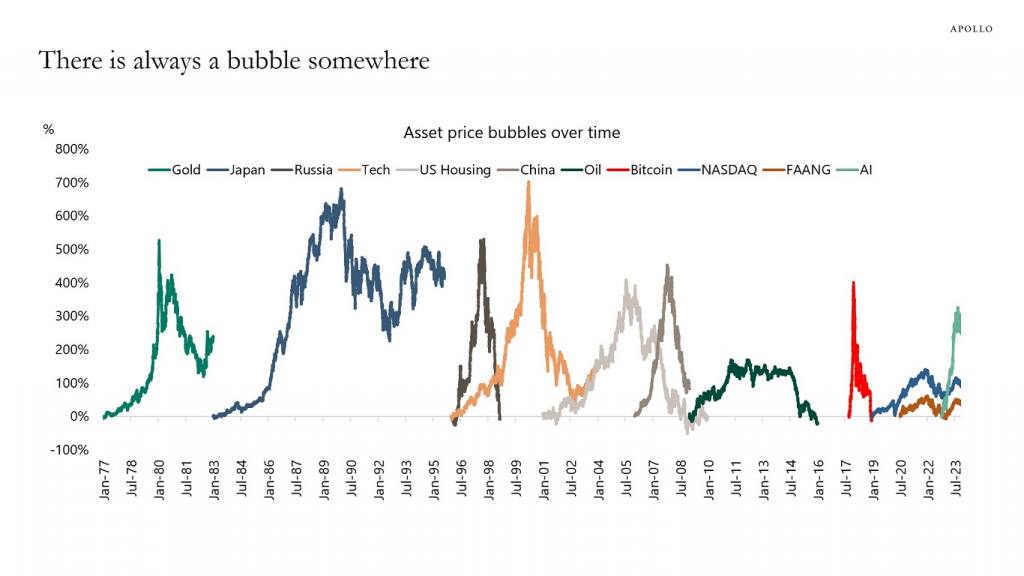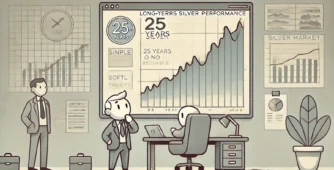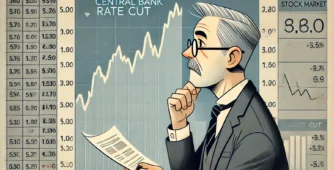Understanding Bubbles: A Historical Perspective
Bubbles have long been a recurring theme in financial markets, with various asset classes experiencing periods of rapid growth, followed by dramatic collapses. The phenomenon of bubbles is driven by human greed and the dynamics of supply and demand. In this article, we will explore a historical perspective on bubbles and discuss a rational approach to riding these waves of market volatility.
Over the past few decades, we have witnessed multiple bubbles in different asset classes, including equities, gold, oil, and even cryptocurrencies like Bitcoin. These bubbles follow a consistent pattern, characterised by a rapid increase in prices, fueled by the enthusiasm of buyers, until a point where there are no more sellers left. Subsequently, the weight of buyers’ expectations collapses upon itself, and prices come crashing down.
To gain a better understanding of these market movements and navigate them effectively, one approach is to employ momentum-based strategies. By identifying the moment at which a stock, asset class, country, or ETF begins to gain or lose momentum relative to others, investors can make informed decisions on when to enter or exit a particular market.
It is essential to acknowledge that it is virtually impossible to catch the exact bottom or top of a market, even for seasoned professionals. However, by utilising a momentum-based strategy, investors can capture a significant portion of each bubble’s movement. Although they may enter and exit slightly later than the peak points, these investors can still benefit from substantial gains as long as they accumulate winnings across different assets, markets, and time periods.
One valuable tool that can help investors identify momentum shifts is historical data. By analyzing the performance of various assets during previous bubbles, investors can identify patterns and trends that signal the onset or end of a bubble. For instance, a study by Apollo Research examined ten prominent historical bubbles and demonstrated the duration and magnitude of each.

One notable example cited in the research is the gold bubble, which occurred from the mid-1970s to the early 1980s. Gold prices soared by more than 800% during this period, making it one of the largest bubbles in history. Eventually, the bubble burst, resulting in a significant collapse in gold prices.
Another example is the Japanese market bubble, which spanned from the mid-1980s to the mid-1990s. During this time, the Japanese market experienced unprecedented growth, with prices increasing six to seven times. However, the collapse of this bubble took considerable time.
Other notable bubbles outlined in the research include the Russian market bubble in 1996-1998, the dot-com bubble of the early 2000s, the US housing bubble leading to the 2008 financial crisis, the China market bubble of the mid-2000s, and the oil market bubble in the late 2000s. More recently, the Bitcoin bubble of 2017 and the surge of artificial intelligence stocks, such as NVD, have also captured investors’ attention.
By studying the historical context of these bubbles, investors can gain insights into the dynamics of market movements and better assess when to enter or exit a particular asset class. It is important to note that while narratives during a bubble’s ascent may paint a rosy picture of the asset’s future, these often represent the extended stages of the upward move, which are inevitably followed by corrections.
Ultimately, successful investors and traders focus on accumulating significant portions of each bubble’s movement, rather than attempting to time the precise market bottoms and tops. By employing a rational and manageable approach, investors can harness the power of momentum and compound their wealth over time. It is through consistent winnings across different investments, markets, and periods that true wealth growth is achieved.

If you have any questions, please write to support@weekendinvesting.com









